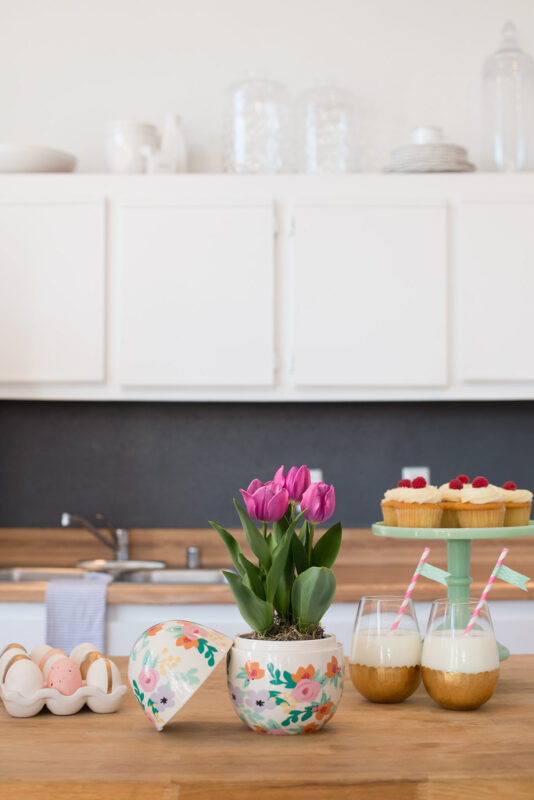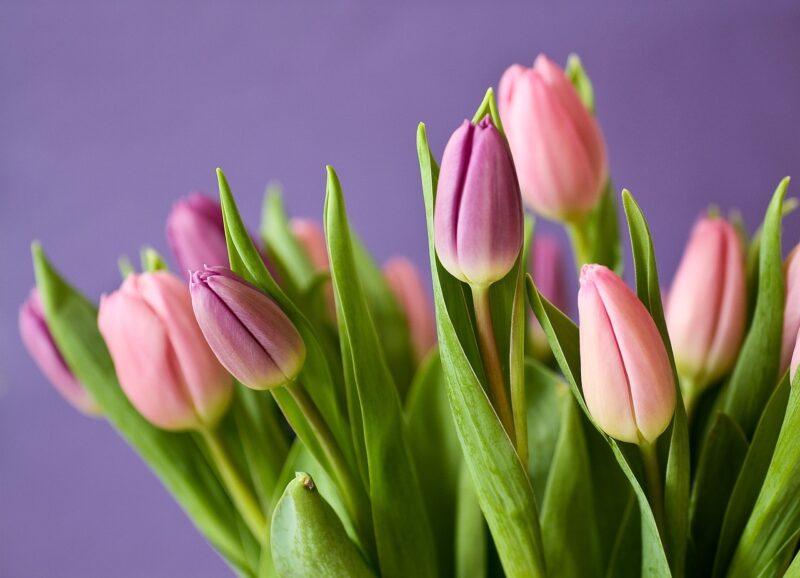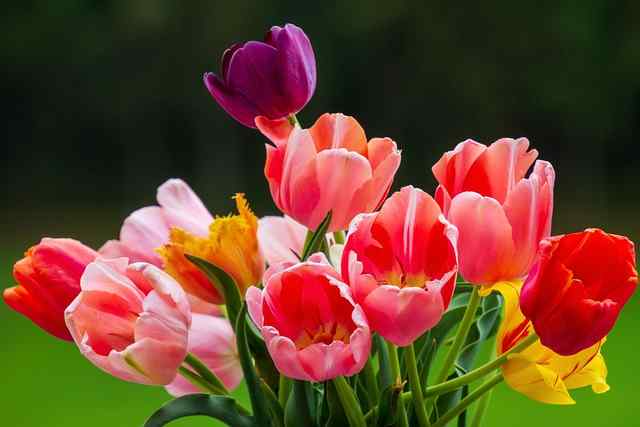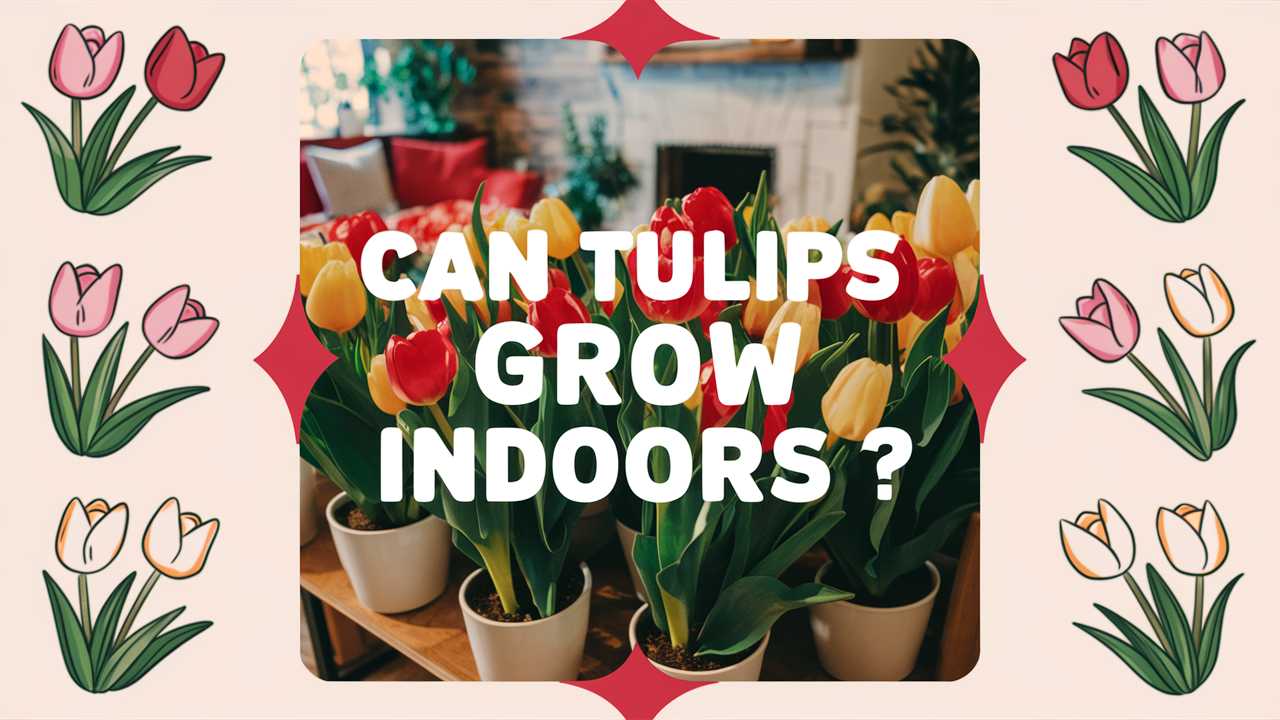In this post, we’ll explore the nuances of growing tulips inside your home, addressing common questions, offering tips for success, and uncovering the beauty of having tulips as an indoor plant.
Can Tulips Be Grown Indoors?

Yes, tulips can certainly be grown indoors! However, this comes with its intricacies. Growing tulips indoors allows you to enjoy their grandeur regardless of outside weather conditions. Whether in pots on a windowsill or as part of an elegant floral arrangement, tulips can thrive indoors with proper attention.
The Right Varieties for Indoor Growth
Not all tulips are created equal when it comes to indoor growth. Some varieties are better suited for potting than others. When selecting tulip bulbs for indoor cultivation, consider these varieties:
Darwin Hybrids: These are robust and known for their vibrant colors and large blooms. They offer a longer-lasting display, making them ideal for indoor use.
Single Late Tulips: Known for their classic tulip shape and vibrant colors, these tulips bloom later in the season and can adapt well to indoor conditions.
Triumph Tulips: These hybrids are reliable and produce a sturdy flower that can withstand conditions of indoor environments.
Botanical Tulips: Smaller and often more diminutive in size, these tulips work well in small containers, making them perfect for indoor arrangements.
Choosing the right variety sets the stage for successful growth. Ensure that the bulbs purchased are firm and free from spots or blemishes. Healthy bulbs are crucial to success in cultivating tulips indoors.
The Ideal Environment for Indoor Tulips

Creating the right environment is key to growing tulips indoors. While tulips can adapt to varying conditions, they have specific requirements that must be met for optimal health.
Light Requirements
Tulips thrive best in bright, direct light. Ideally, place your pots in a south- or southwest-facing window where they can soak up as much sunlight as possible. If natural light is limited, consider supplementing with grow lights to ensure they receive approximately 12-16 hours of light each day.
Temperature Control
Tulips prefer cooler temperatures compared to many houseplants. The ideal temperature range for indoor tulips is between 60°F to 70°F (15°C to 21°C). However, they can also tolerate slightly cooler conditions, which might help prolong their bloom time. Be cautious of drafts from windows or doors, as this can stress the plants and hinder their growth.
Humidity Considerations
Maintaining appropriate humidity levels contributes to the overall health of your indoor tulips. Ideally, tulips prefer moderate humidity, around 40% to 70%. If your indoor air is too dry, consider placing a small humidifier nearby or grouping multiple plants together to create a microclimate conducive to healthy growth.
Planting Tulip Bulbs Indoors

Getting started with indoor tulip cultivation is relatively straightforward. Here’s a step-by-step guide to planting your tulip bulbs indoors.
Step 1: Choosing the Right Container
Selecting the right container is crucial. Choose pots with drainage holes to prevent water logging, which can cause bulb rot. Additionally, opt for a wide container that allows for adequate spacing—recommended spacing being about 4-6 inches apart. This allows each tulip room to grow and flourish.
Step 2: The Right Potting Mix
Use a high-quality potting mix that drains well. A combination of potting soil, perlite, and sand can provide the perfect balance. Avoid regular garden soil, as it may not drain adequately for potted tulips.
Step 3: Planting the Bulbs
Position the tulip bulbs with the pointed end facing upwards, burying them in the soil to a depth of about 6-8 inches. Gently pack the soil around them and water lightly. It’s important not to drown the bulbs; ensure that the soil remains moderately moist but not soggy.
Step 4: Chilling Period
Tulip bulbs require a chilling period to stimulate growth. After planting, place the pots in a cool, dark area, such as a basement or an unheated garage, for about 12-16 weeks. During this time, the bulbs will begin their root development. Check periodically to ensure the soil remains moist.
Step 5: Bringing Them Out
Once the chilling period is complete and you start to see green shoots emerging, it’s time to move your pots to an area with ample light and warmth. This is when the transformation begins, as your tulips will begin to grow and blossom into vibrant flowers.
Watering and Care: Keeping Tulips Thriving

Once your tulips sprout, ongoing care becomes essential to encourage healthy growth and vibrant blooms. You’ll want to focus on watering, fertilizing, and managing pests.
Watering Wisely
Water your tulips carefully. The soil should be kept moist but not overly wet. One method is to wait until the top inch of soil feels dry before watering again. During the growing phase, you might find you need to water more frequently, particularly if the air is dry.
Feeding Your Tulips
Fertilizing tulips is not mandatory, but a diluted, well-balanced fertilizer can promote healthy growth. Consider feeding your tulips with a liquid fertilizer once every two weeks during their active growing phase. Make sure to follow the recommended dilution rates on fertilizer labels to avoid over-fertilization.
Managing Pests and Diseases
Indoor tulips can occasionally attract pests like aphids or spider mites. Regularly inspecting your plants for any signs of trouble is the best preventive measure. If pests are spotted, treat your tulips with insecticidal soap or neem oil. Additionally, ensuring proper air circulation and avoiding overhead watering can mitigate the risk of fungal diseases.
The Joy of Blooms: Enjoying Indoor Tulips

As the time comes for your tulips to bloom, the joy they bring is simply unmatched. These elegantly shaped flowers will brighten up your space and enrich your environment. Not only do tulips enhance aesthetics, but they also carry emotional weight; they are emblematic of spring’s arrival and can evoke feelings of joy and optimism in those who pursue gardening.
Displaying Your Tulips
The striking beauty of tulips lends itself well to various decorative arrangements indoors. Here are a few creative ideas to display your blooms:
A Single Stem in Glass: For a minimalist approach, consider placing a single stem in a glass vase. This can serve as a focal point on a dining table or windowsill.
Mixed Bouquet: Combine tulips with other spring flowers, like daffodils or hyacinths, for a stunning burst of color. Use varying heights and textures to create visual interest.
Cluster Arrangements: Group a few pots together for a colorful display. Mixing different varieties spearheads diversity, creating a delightful ensemble that draws attention.
Tulips and Seasonal Decor
Tulips are not just for the spring season; they can be integrated into year-round home decor. By choosing specific colors, landscapers can tie tulips into holiday decor—think red and white for Christmas or pastels for Easter. Incorporating them into your seasonal decorations can create an inviting atmosphere.
Post-Bloom Care: What Happens Next?
Once your tulips have finished blooming, the experience may not necessarily end. Caring for tulips after they bloom can lead to successful returns in subsequent seasons. Here’s how to handle your tulips post-bloom.
Allow Foliage to Die Back Naturally
After flowering, it’s crucial to allow the foliage to remain until it naturally turns yellow and dies. This process allows the bulbs to store energy for the following year. Resist the urge to cut back the leaves prematurely, as this could hinder future blooms.
Storage of Bulbs
If you want to keep your bulbs for next season, certain steps should be taken. Once the leaves have withered, gently lift the bulbs from the soil, allowing them to dry for a few days in a cool, dark place. Store them in mesh bags or paper bags in a dry, cool location until it’s time to replant.
Replanting
You might choose to plant them back into containers or even outdoors in the garden after the freezing danger has passed. For someone keen on indoor blooms, the indoor process can start all over again with care and attention similar to your previous cycle.
Conclusion: The Indoor Tulip Experience
Growing tulips indoors is not only a feasible endeavor but also a rewarding experience that can infuse your home with color and vitality. With the right selection of bulbs, attention to their environment, and proper care, you can savor the beauty of tulips throughout their blooming period.





